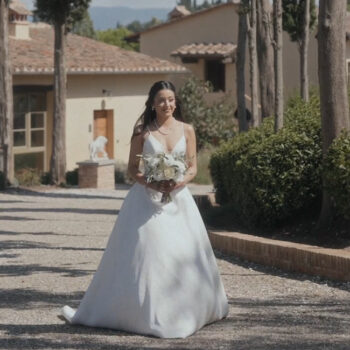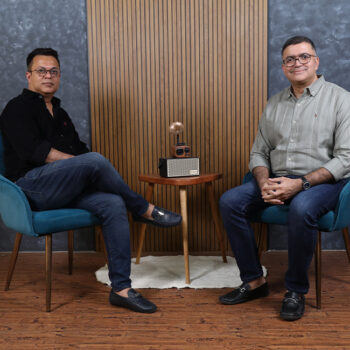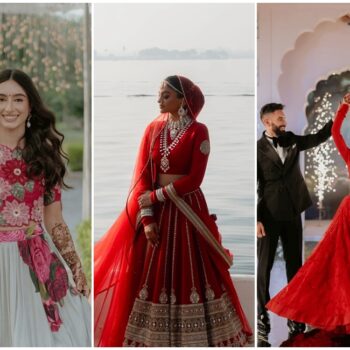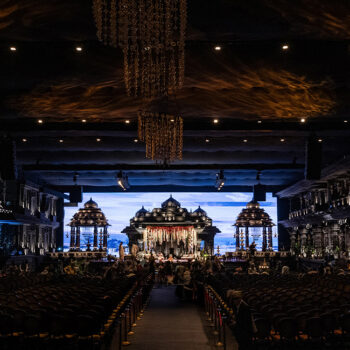This entry was posted
on Wednesday, April 8th, 2020 at 4:18:06 pm and is filed under Bridal Fashion and Beauty, Wedding Planning.
You can follow any responses to this entry through the RSS 2.0 feed.
Both comments and pings are currently closed.
Expert Speak: Designer Pranay Baidya on bridal fashion trends, ethnic weaves, and reviving artisanal crafts
Bridal Fashion and Beauty, Wedding Planning - Apr 8, 2020
Bridal fashion in India has undergone an evolution over the years, with new trends and styles inspiring and molding wedding wardrobes of young brides across the country. However, like much else in our country, traditions have always played an important part in wedding fashion.
To throw light on the ever-changing trendy-vs-traditional toss-up with modern brides, we spoke to Kolkata based designer Pranay Baidya, who gave up a blooming career in New Zealand to dedicate his talent to revive the popularity of traditional arts and weaves, and has recently launched his initiative “Atelier Pranay Baidya Tant Saree & Textile revival project”.

1. The wedding industry is a dynamic business rooted in ancient traditions. What are some emerging trends you have observed?
“A wedding celebrates the union of two souls and has always held a sacred place in our society. Earlier this occasion used to be a very family and culture driven affair. However, with the advent of Westernization, young couples today are increasingly enamored by the romanticism and glamour of their customs as well as fashion. White weddings with flowing bridal gowns, cocktail events with evening gowns, tiaras and tuxedos are just a few examples. While inspiration can be sought from anywhere, in my opinion, the core essence and the sanctity of our intrinsic customs and traditions need to be grounded firmly. We are blessed with not one, but several rich cultures within our own country, and an infinite number of options to choose from when it comes to fabrics, outfits and jewellery that celebrate our heritage. Blending artisanal intricacies with a contemporary outlook would be a true celebration of the modern Indian bride. The need of the hour is to be not archaic, but relevant.”


2. Heirloom fabrics have always been popular in traditional fashion through generations. What is their place in the modern world where there are so many options available?
“India has been a treasure trove of culture and fashion from time immemorial. Every Indian woman has grown up fascinated by the kaleidoscopic range of rich sarees in their mother’s and grandmother’s wardrobes. My fondest memory, personally, is of accompanying my grandmother when she went shopping, awestruck by the sheen of silk, beautiful prints, and intricate embroideries. It is, in fact, what pulled me from my established career in New Zealand to return to India and dedicate myself to the revival of traditional art forms. From my experience with clients, I have observed that people have an inexplicable awe of everything foreign, while the finest of materials, expert craftsmanship and handmade pieces of excellence at home go unappreciated. I constantly strive to educate people about the myriad choices and fine workmanship of fabrics and outfits right here in the country, all home-grown from end-to-end.”




3. In an age where machine-based, mass-produced fashion has become very popular, can India’s handloom techniques survive? How can their popularity be revived?
“Like many other things, people in India look to influencers for their fashion inspiration and direction. Celebrities, designers, stylists, and other influential personalities hold tremendous power to sway popular opinion and need to be the crusaders for the survival and resurgence of traditional art forms. They need to use their voice to educate and expose people to the beauty and value of handlooms techniques, the intricacies of these age-old crafts, and the unerring skills of our traditional artisans creating timeless pieces of art that last decades and become priceless heirlooms to pass onto your loved ones. When looking for high-quality, high-value items for your wedding, luxury need not only mean international labels, foreign-made fabrics or crystal embellishments from Swarovski. What could be more precious than fine silks woven with pure gold zari or encrusted with Jaipur cut gemstones for your big day!”


4. Tell us about traditional Tant sarees, and their significance, craft and history. How can they be incorporated into a modern Indian bride’s trousseau?
“Tant refers to the handlooms in West Bengal that are used to weave sarees and textiles. First recorded in Bengal in the 15th-century, in Shantipur situated in Nadia district, the art continued to flourish during the Mughal rule through the 16th and 18th centuries. It received extensive royal patronage along with muslin and jamdani. The decades prior to Indian Independence witnessed an inflow of modern weaving techniques such as improvements in the handloom and introduction of the jacquard loom that is still used today. After 1947, many weavers from Bangladesh migrated to India and were rehabilitated in West Bengal. Fulia a town neighboring Shantipur became a new home for these weavers from Tangail, who brought with them the weaving traditions of their ancestral land. Over the years, several regions developed their own style of weaving, and today are the homes of the most well-known varieties of tant sarees and textiles. A quintessential six-and-a-half yard Tant saree is characterized by thick two-to-four inch borders and a decorative pallu. Woven using fine cotton yarn in a variety of floral, paisley, and other artistic motifs, each saree takes seven to 10 days to come alive. Some of the most traditional motifs are Bhomra (bumble-bee), Tabij (amulet), Rajmahal (royal palace), Ardha-Chandra (half-moon), Chandmala (garland of moons), Ansh (fish scale), Hathi (elephant), Nilambari (blue sky), Ratan Chokh (gem-eyed), Benki (spiral), Tara (star), Kalka (paisley) and Phool (flower).”


“Worn by women of all ages for daily wear as well as special occasions, these sarees can be an incredible addition to your wedding wardrobe. Consider a fine muslin-silk jamdani with pure zari work, or exquisite fabric with intricate work for your saree, blouse or even a veil. Embrace the gilded glow of a Swarna Baluchari crafted in pure gold for your ceremony, whose luxurious feel is fit for royalty. Exquisite sarees with tales of mythology and history woven into the fabric make a statement like nothing else. You can make your wardrobe more versatile by using yardage of handloom fabrics to create other outfits or incorporate it into your decor, invites or even wedding favors.”


5. Why did you launch the Atelier Pranay Baidya Tant Saree & Textile revival project, and what do you hope to achieve through it?
“Alongside my work as a fashion designer, I launched the Atelier Pranay Baidya Tant Saree & Textile revival project as my passion project. As a child, my grandmother’s collection of exquisite handloom sarees always beguiled me, and it is what inspired me to start this initiative. As an economic trade and industrial activity, “Tantshilpa” (the art of weaving handloom sarees) occupies a place second only to agriculture in providing livelihood to the people of these communities. In an endeavor to showcase and celebrate their exemplary craft, we are partnering directly with weaver communities in the Santipur, Phulia, Nadia & Dhanikhali districts of West Bengal. We will be hosting regular workshops with the weavers (currently doing this through video calls), offering them creative direction and textile design expertise in developing an ongoing collection of modern-day Tant Sarees and textiles that can be procured by yardage. The collection starting for little as Rs 1,000 will be warehoused and cataloged at my Kolkata Atelier, and retailed through leading multi-designer stores across the country, a nationwide calendar of experiential pop-ups and e-commerce portals to the Indian diaspora living overseas, with funds going back directly to the weavers.”




6. The current global socio-economic environment in the light of the COVID-19 pandemic is proving detrimental for most industries. What can be done to preserve and promote artisanal crafts in these challenging times?
“With shops and markets closed due to the on-going threat of COVID 19, the weaving communities have incurred huge losses. Creating stock for the past seven to eight months, they had been preparing for the months of March & April (Chaitra Sale) as they are some of the busiest months of the year, leading up to Bengali New Year (on April 14), the plans of which have now gotten derailed. The need of the hour is to mobilize retail and e-commerce support with an aim to boost business and revive endangered weaves and communities. This time can be used to digitize their efforts and help it reach customers in the safety of their homes. Dedicated social media campaigns need to be led by influencers and ambassadors to educate people about their work.”



Photos Courtesy: Avishek Das






